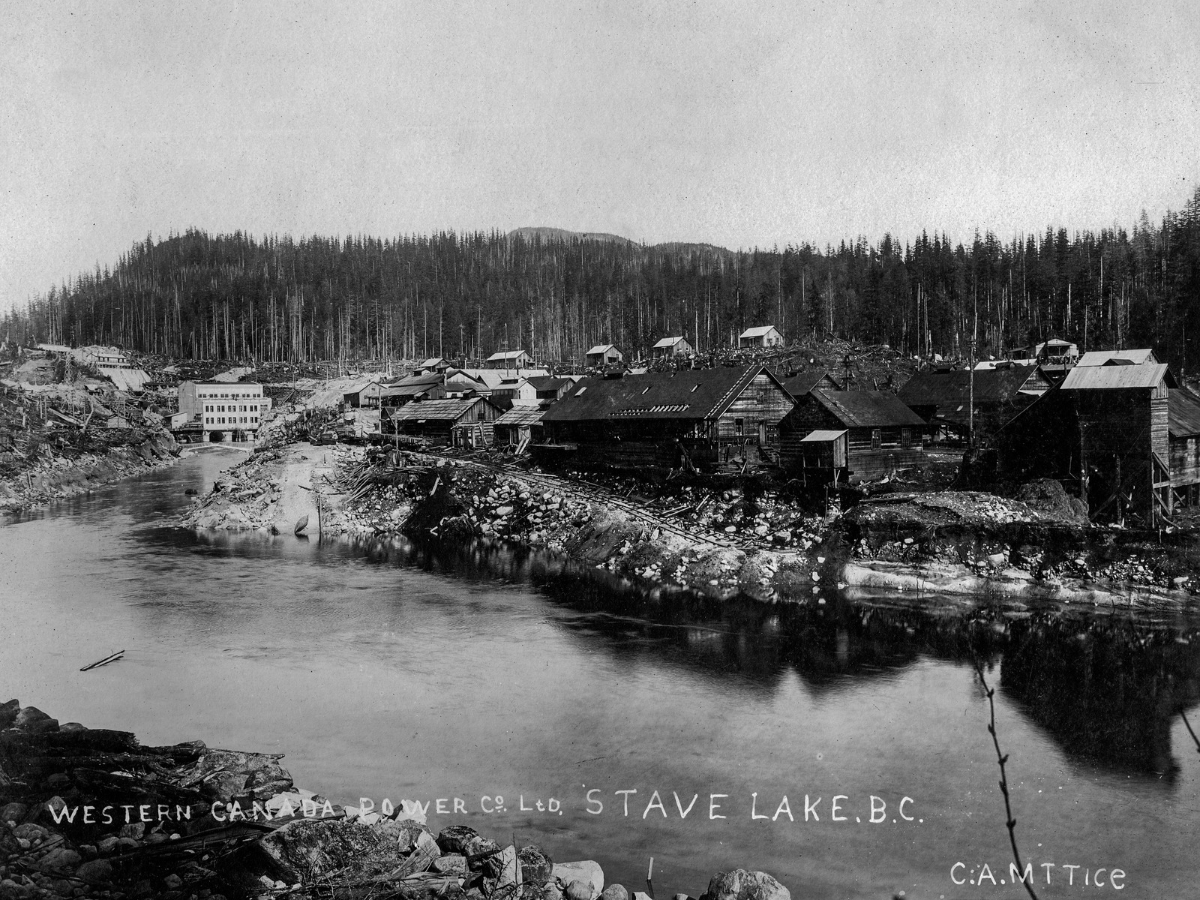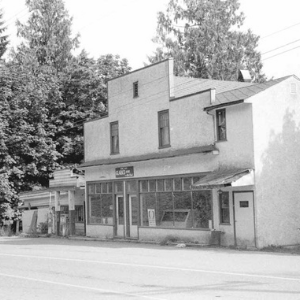Stave Falls
Area description
The district is on the western side of the Stave River is known as ‘Stave Falls’, taking its name from the tremendous waterfalls at the lower end of Stave Lake. Originally the whole district was called ‘Stave River’; then, in in the late 1890s the western side was ‘Ruskin’; and it only became ‘Stave Falls’ in 1914 when it obtained its own post office. The Sxa’yaks were the first people known to have lived here, and early maps show the name of the river as the Hyax River, evidently the same Indigenous name as the band. The Kwantlens later followed them. However, the Fort Langley traders took to calling it the Stave River, as its forests produced the wood for their barrel staves.
With their three great cataracts, the falls were investigated as a source of electrical power as early as the 1890s, and soon after the turn of the century surveyors were at work. Years of site preparation followed, as a trail was hewed out of the forest, a sawmill built and log buildings erected. A logging railway started to convey materials to the dam site. Finally, in 1912 the dam site at Stave Falls was complete and producing power. In 1930 a second dam at Ruskin was also completed.
A large community of workers grew up around the area of the Falls with a strong social life and with every facility that a settlement might need, including a small hospital. West of the dam site the residential district was known as Stave Gardens and had its own community.
The historic powerhouse at Stave Falls is today a destination for hundreds of visitors, who come to marvel at this stupendous man-made creation and the human endeavour to control the forces of nature. It was designated a national historic site in 2003 and in 2009 was among the first properties to be listed in the District of Mission Community Heritage Register.



